Storing and Handling
Art Posters
by Bob Brooke
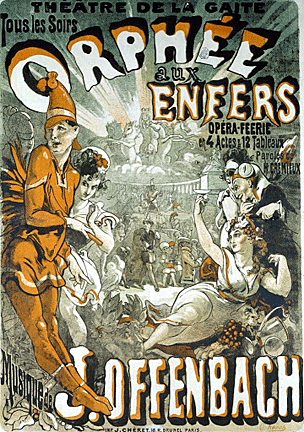 Unlike
the posters produced for rock concerts and political campaigns, art
posters, while promoting an event or cause, are also works of art.
Beginning with the first art poster created by Jules Chťret in 1887 up
to the ones produced by the WPA (Works Progress Administration) in the
1930s and those produced for circuses around the world up to the 1950s,
the span of styles and purposes is amazing. But keeping these art
posters safe and secure can be a challenge, as many of the earlier ones
are worth a small fortune. Unlike
the posters produced for rock concerts and political campaigns, art
posters, while promoting an event or cause, are also works of art.
Beginning with the first art poster created by Jules Chťret in 1887 up
to the ones produced by the WPA (Works Progress Administration) in the
1930s and those produced for circuses around the world up to the 1950s,
the span of styles and purposes is amazing. But keeping these art
posters safe and secure can be a challenge, as many of the earlier ones
are worth a small fortune.
While art posters are meant to be displayed on a wall, as early ones
were, itís impractical to display an entire collection. No one has that
much wall space. Serious poster collectors store their posters in safer,
less exposed places in order to better preserve them so that they retain
their value. There are several ways to store posters, depending on space
and budget.
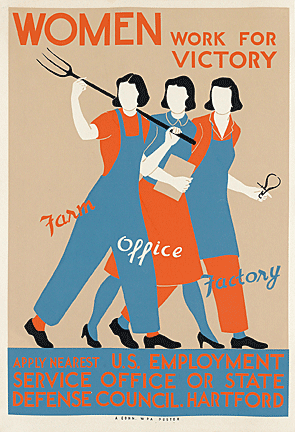 The
cardinal rule for storing posters of any kind is to choose a place free
of moisture year round. This lets attics and basements out. So the only
place is somewhere within a home that has a constant temperature and no
light. The storage area should also be clean and free from pests like
insects and mice. The
cardinal rule for storing posters of any kind is to choose a place free
of moisture year round. This lets attics and basements out. So the only
place is somewhere within a home that has a constant temperature and no
light. The storage area should also be clean and free from pests like
insects and mice.
There are two ways to store art postersóflat in portfolios and rolled up
in tubes. It goes without saying that valuable ones should be stored
flat. Before storing either way, itís important to decide if the
collection will be rotated or part of it kept in storage. Before
preparing posters for storage, separate those that will be rotated from
those what will remain stored.
Posters should be cleaned before storing them, removing any dirt, sticky
residue or pieces of old tape from them. This will stop any contaminants
damaging them once theyíre stored. But do not use cleaning products
containing chemicals which might also damage them. Use a clean, soft
cotton cloth to gently wipe them.
Flat Storage
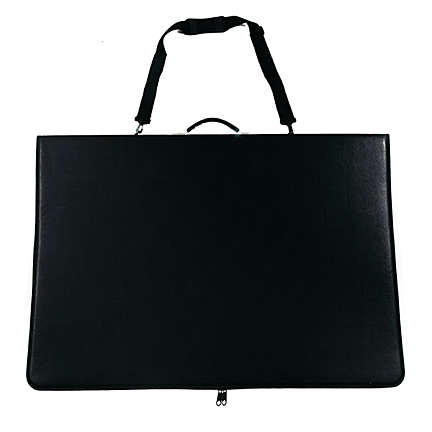 Serious
collectors prefer to store their posters in art portfolios, available in
various sizes at art supply stores and online. These flat skinny
suitcases usually have a zipper that runs three quarters of the way
around so that they open like a book. Some have an envelope-like flap
instead of a zipper. All come with a handle to make it easier to
transport them. Storing posters flat will prevent them from accidentally
creasing. Also, portfolios are usually more durable than other forms of
storage containers. When storing posters, itís important to choose a
rigid rather than a flexible portfolio to prevent it from bending during
storage and thus damaging the posters contained in it. Serious
collectors prefer to store their posters in art portfolios, available in
various sizes at art supply stores and online. These flat skinny
suitcases usually have a zipper that runs three quarters of the way
around so that they open like a book. Some have an envelope-like flap
instead of a zipper. All come with a handle to make it easier to
transport them. Storing posters flat will prevent them from accidentally
creasing. Also, portfolios are usually more durable than other forms of
storage containers. When storing posters, itís important to choose a
rigid rather than a flexible portfolio to prevent it from bending during
storage and thus damaging the posters contained in it.

Rather than laying posters flat inside a portfolio, itís a good idea to
sandwich them between sheets of acid-free plastic. This is available on
a roll. To prepare it, choose a wide flat surface and lay out the
plastic first, cutting it so that itís an inch wider than the poster on
all sides. Lay the poster on top of the plastic and then cut a second
sheet of plastic to lay on top of the poster, creating a protective
sandwich. A sheet of acid-free poster or foam board could be placed
under the poster inside the plastic for added stiffness and durability.
Lastly, clip all sides of the plastic with plastic or plastic coated
paper clips, but donít let them touch the poster.
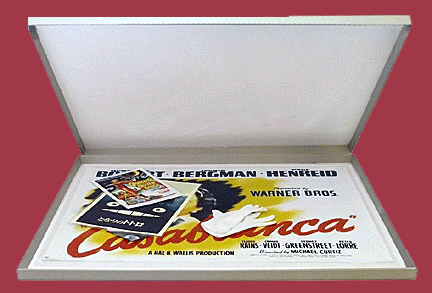 An
alternative to storing art posters in a portfolio is to use a flat
poster storage box, available at some office supply stores and online.
These are usually made of cardboard and aren't as sturdy as a portfolio. An
alternative to storing art posters in a portfolio is to use a flat
poster storage box, available at some office supply stores and online.
These are usually made of cardboard and aren't as sturdy as a portfolio.
Either of these methods can be used to store individual posters or a
group of posters, each separated by a sheet of plastic. However, itís
important not to store too many posters together.
Tube Storage
The second method for storing posters is in cardboard tubes made
especially for that purpose. Archival tubes are available at office
supply stores and online. As with flat storage, itís important to encase
the poster or group of posters in acid-free plastic sheets. Lay out the
largest poster first, then the next largest, and so on, with the
smallest poster last of all. Unlike with flat storage, it isnít
essential to lay additional plastic sheets between each poster in a
group.

Roll the posters inside the plastic, then tape the plastic so it stays
rolled up. Carefully wrap up the ends like a wrapped piece of candy, or
tuck the plastic in at the ends of the roll.
Slide the rolled-up posters in their plastic sheath inside the cardboard
tube and seal it.
While this second method sounds easier, it isnít recommended for
particularly valuable posters. The most valuable examples should be
professionally framed and sealed and hung on a wall. This will make sure
that each one remains in its best condition.
Stored posters should be checked occasionally to make sure that moisture
or pests havenít gotten inside the plastic wrappings. Antique and
relatively old paper goods are prone to damage and need to be watched
carefully.
Labeling Posters
 As
with other collectible and art collections, itís important to use labels
for identification. As
with other collectible and art collections, itís important to use labels
for identification.
While poster storage is important, labeling is doubly so. To avoid
having to remove all posters from their encasements, especially when
several are stored together, itís important to label them properly.
Apply sticky labels to not only the portfolios but to each poster
sandwich inside them. The same goes for posters stored in tubes. Place
all labels on the outside of each sandwich to avoid any damage to the
poster or posters inside.
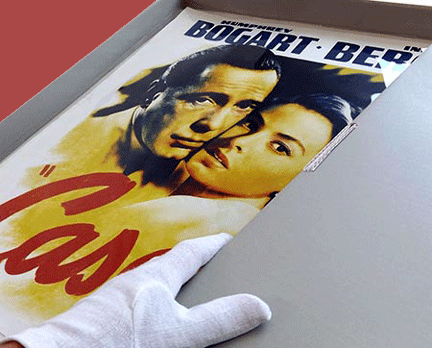 Remember,
paper goods are delicate and can be easily damaged. Wash hands in hot
water only and thoroughly dry them to prevent skin oils from damaging
the surface of the posters. Better yet, purchase a couple of pair of
white cotton gloves, also available at office supply stores and at
archival sites online. Remember,
paper goods are delicate and can be easily damaged. Wash hands in hot
water only and thoroughly dry them to prevent skin oils from damaging
the surface of the posters. Better yet, purchase a couple of pair of
white cotton gloves, also available at office supply stores and at
archival sites online.
Always use both hands when gently handling posters. Never lift posters
by a single corner which can cause tearing. And don't drag posters
across surfaces which could scratch them.
<
Back to Caring for Your Collections
Archives
|
